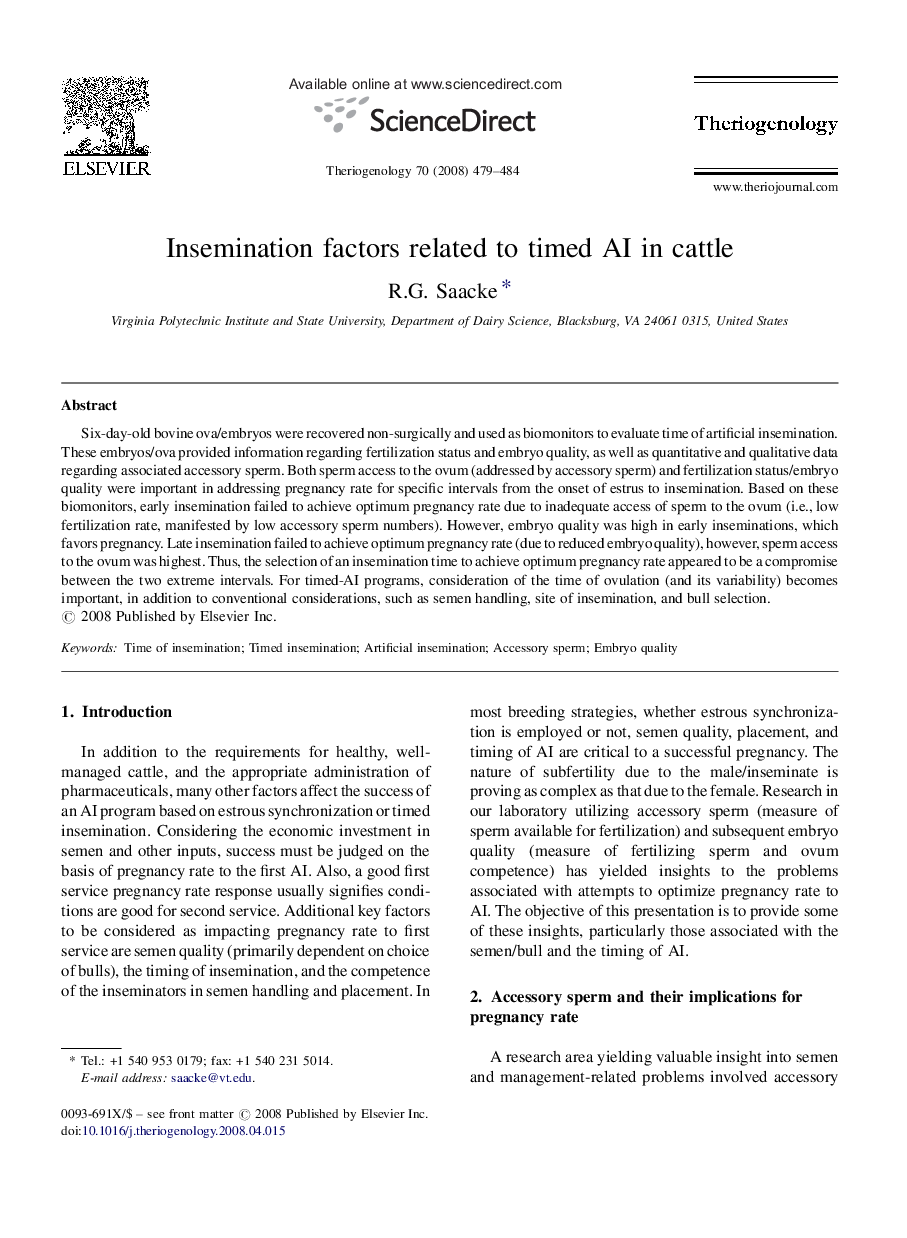| Article ID | Journal | Published Year | Pages | File Type |
|---|---|---|---|---|
| 2095815 | Theriogenology | 2008 | 6 Pages |
Six-day-old bovine ova/embryos were recovered non-surgically and used as biomonitors to evaluate time of artificial insemination. These embryos/ova provided information regarding fertilization status and embryo quality, as well as quantitative and qualitative data regarding associated accessory sperm. Both sperm access to the ovum (addressed by accessory sperm) and fertilization status/embryo quality were important in addressing pregnancy rate for specific intervals from the onset of estrus to insemination. Based on these biomonitors, early insemination failed to achieve optimum pregnancy rate due to inadequate access of sperm to the ovum (i.e., low fertilization rate, manifested by low accessory sperm numbers). However, embryo quality was high in early inseminations, which favors pregnancy. Late insemination failed to achieve optimum pregnancy rate (due to reduced embryo quality), however, sperm access to the ovum was highest. Thus, the selection of an insemination time to achieve optimum pregnancy rate appeared to be a compromise between the two extreme intervals. For timed-AI programs, consideration of the time of ovulation (and its variability) becomes important, in addition to conventional considerations, such as semen handling, site of insemination, and bull selection.
